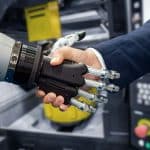Whether you’re a seasoned pro or just starting your journey into the world of sewing, creating an efficient and ergonomic sewing room at home is key. It can make your work easier, faster, and more enjoyable, regardless of the size of your projects. From space considerations to storage solutions, fabric organization to machine placement, every detail matters. In this comprehensive guide, we will explore how you can set up your own home sewing studio to keep your tools, fabrics, and supplies well-organized and within easy reach.
Choosing the Best Room and Space
Determining the best room and space for your sewing studio is the first step. You might be tempted to squeeze your equipment into a small closet or corner of a room, but remember, your workspace needs to be comfortable and easy to navigate.
Sujet a lire : What Are the Key Features of a Smart Nursery That Promotes Safety and Comfort for Infants?
Your sewing room should ideally have ample natural light, be well-ventilated, and be free of distractions. You might want to consider spare bedrooms, unused office rooms, or even a quiet corner in the basement or attic. But what if you live in a small apartment with limited space? Fear not! You can still create an efficient sewing space with clever furniture choices and organization techniques that maximize the use of your available space.
A Comfortable and Functional Sewing Table
In the heart of every sewing room lies the sewing table. This is where the magic happens. The right table will give you enough surface area for cutting fabric and ample space to maneuver your sewing machine.
En parallèle : How to Design a Luxurious and Functional Dressing Room in a Limited Space?
When choosing a sewing table, consider the type of sewing work you plan to do. If you’re into quilting or other large projects, you will need a larger table. If you’re mostly mending and making small projects, a compact table might be sufficient.
The height of the table is equally important. It should be at a comfortable height for you to work while sitting, to avoid strain on your back and neck. You might want to consider an adjustable height table for added flexibility. A table with storage compartments or shelves can also help keep your tools and supplies organized and within easy reach.
Storage Solutions for Fabric and Supplies
A neat and organized sewing room is a productive one. Storing your fabric, patterns, threads, and other sewing supplies efficiently will not only keep your workspace tidy but also make it easier to find what you need when you need it.
Start by sorting your fabrics. Store them according to colors, patterns, or types. Clear plastic bins or baskets on shelves are great for this purpose. They allow you to see what’s inside without having to rummage through stacks of fabric.
Your threads, needles, scissors, and other small tools can be stored in a drawer or a toolbox. You can also use pegboards, magnetic strips, or hanging organizers to keep these items within easy reach.
Setting Up Your Sewing Machine and Cutting Area
The placement of your sewing machine and cutting area is crucial for an ergonomic and efficient sewing room. Your sewing machine should be positioned on your table so you can sit comfortably with your feet flat on the floor and your back straight.
Your cutting area, on the other hand, should be at a height that allows you to stand comfortably without hunching over. A large, self-healing cutting mat is a great investment for this area. It protects your table surface and allows you to cut fabric more precisely.
Remember to keep your most frequently used tools like shears, rotary cutters, and rulers within easy reach of your cutting area.
Keeping Your Sewing Room Tidy and Inspiring
Last but not least, strive to keep your sewing room tidy and inspiring. A clean workspace can increase your productivity and reduce stress. Make it a habit to clean up your space after each project. Put tools and supplies back to their assigned places.
Make your space inspiring by adding a pop of color or displaying your favorite artworks or inspirational quotes. Keep your completed projects in sight to remind you of your skills and achievements. After all, your sewing room should not only be a place to work but also a space where you can unleash your creativity and enjoy the process of creating.
Making Your Sewing Room Multifunctional
A sewing room in many homes doubles as a craft space, home office, or even a guest room. Making your sewing room multifunctional can be a challenge, but it also opens up opportunities for creativity and efficiency.
Start by considering the different activities you plan to do in the room. Do you need a desk for a computer and paperwork? Will you need an ironing board for pressing your projects? If the room will also serve as a guest room, how will you arrange the furniture to accommodate a bed? These are just a few questions to consider when planning your multipurpose sewing room.
A sewing table with a drop-leaf extension can be a great solution if you need extra space for cutting or quilting, but also want the flexibility to tuck it away when not in use. If you plan to use the room as a home office, consider a desk with storage for both sewing and office supplies.
An ironing board that folds out from a wall or a cabinet can save you floor space. A foldable bed or a sofa bed could be a smart choice if the room will also serve as a guest room.
No matter how you plan to use the room, make sure all your tools and supplies are easily accessible. Use clever storage solutions like wall-mounted shelves, rolling carts, or under-bed storage boxes to keep your sewing supplies organized and within easy reach.
Displaying and Storing Finished Projects
Once you’ve finished a project, you might want to display it or store it properly. For quilt patterns or other textile artwork, consider hanging them on the wall. Not only does this add a personal touch to your sewing room, but it also serves as a constant reminder of your brilliant craftwork and a source of inspiration for your next project.
For smaller sewing items like clothes, stuffed toys, or bags, it’s important to store them in a way that keeps them clean and prevents damage. You could use fabric storage boxes or bags for this purpose. If you’re storing quilts, remember to unfold and refold them every few months to prevent creases from becoming permanent.
For digital patterns, make sure you have a reliable system to store and retrieve them. You might want to create a specific folder in your computer or cloud storage for these. Label them properly for easy identification. For physical patterns, consider storing them in a binder or a filing system.
Conclusion
Setting up an efficient and ergonomic home sewing studio may seem like a daunting task, but with careful planning and organization, it can be an enjoyable and rewarding process. Remember, the primary aim is to create a sewing space that suits your needs, maximizes productivity, and uplifts your spirits. Whether you’re making a small sewing project or working on a large quilt pattern, your sewing room should be a place where creativity thrives. So go ahead, plan your space, add your favorite items to the cart, download your preferred patterns, and start creating in your own personalized sewing studio!











